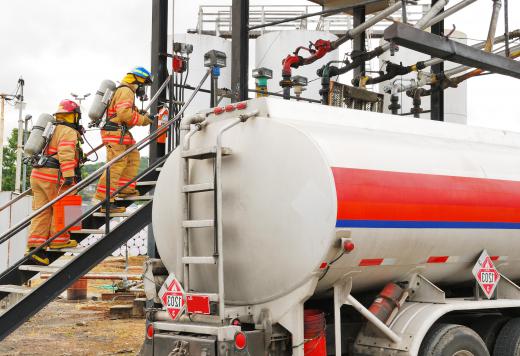Minimum Ignition Energy (MIE) is a measure of the lowest amount of energy conveyed by an electrical spark that will ignite a dispersed fuel or otherwise burnable compound in air. Conditions must be ideal for the explosion to take place with MIE values, but only slightly higher ignition values may be necessary to ignite the mixture otherwise. The spark that causes an explosion in such cases can be either from an electrostatic discharge (ESD) where a latent difference in electrical potential exists between two objects within close proximity, or it can be caused by a live electrical circuit that experiences an arc or short circuit discharge event. Understanding combustion chemical processes that lead to minimum ignition energy events is important in the field of firefighting as well as industries that involve the storage and use of volatile compounds, such as in the operation of aircraft.
Volatile fuels and solvents, and other chemicals that are known to have very low minimum ignition energy values include acetylene and hydrogen at 0.017 millijoules, ethylene at 0.08 millijoules, and methane at 0.3 millijoules. These chemicals must be handled with extreme care in confined spaces due to the fact that all of them also have low evaporation points at normal atmospheric pressure and temperature. One of the costliest and deadliest of US commercial air crashes, the flight of TWA 800 12 minutes after takeoff from New York City, New York, in July, 1996, has been attributed to a possible minimum ignition energy explosion in the center wing fuel tank. About 50 gallons (189 liters) of aviation fuel known as Jet A that was stored in the tank at the time was inadvertently heated by air-conditioning units directly under the tank area, which vaporized some of the fuel. As the plane rose in altitude, reduced air pressure increased the evaporation to the point that overpressure and a possible unknown spark condition created an explosion that broke apart the fuel tank itself and destroyed the aircraft.

Several other types of compounds that are dispersed in air as fine particulate matter, from powdered metals to grain flour and solid fuels like coal and sulfur, also tend to have low minimum ignition energy values. The MIE for aluminum is 15 millijoules and magnesium is 40 millijoules. Coal ranges from a value of 30 to 60 millijoules and grain-based flour will ignite at 240 millijoules. A dust explosion can even occur with a random mixture of floor residue swept up into the air if it is well-dispersed in a heated environment, with the potential to ignite at a range of 0.2 millijoules to 10 joules if the humidity is below 80% and the ambient temperature is 59° to 77° Fahrenheit (15° to 25° Celsius).
Other compounds known to have low minimum ignition energy values well below that of 1 millijoule include propane-type fuels, iron dust, and carbon disulphide. These low values are significant when compared to the energy level generated from common sources of sparks. A static electric spark typically discharges about 22 millijoules of energy, and a spark plug in an automobile will discharge about 25 millijoules of energy with each combustion cycle.
